|
John Tyman's Cultures in Context Series EGYPT and the SAHARA www.johntyman.com/sahara |
|
7.1 Ain Khudra and Tourism Pt. II : 530-548 |
| . |
|
John Tyman's Cultures in Context Series EGYPT and the SAHARA www.johntyman.com/sahara |
|
7.1 Ain Khudra and Tourism Pt. II : 530-548 |
| . |
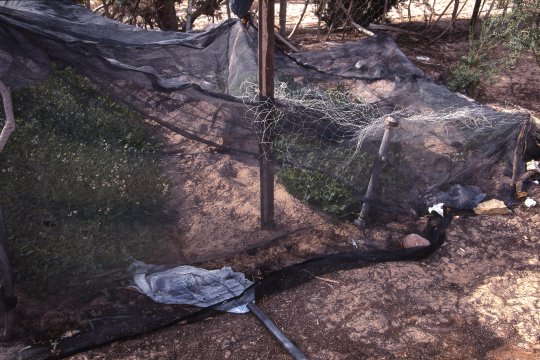 |
| .530. They also grew, under netting to keep out animals and birds, a selection of animal feed and a variety of vegetables, though not enough yet to feed all of their visitors. |
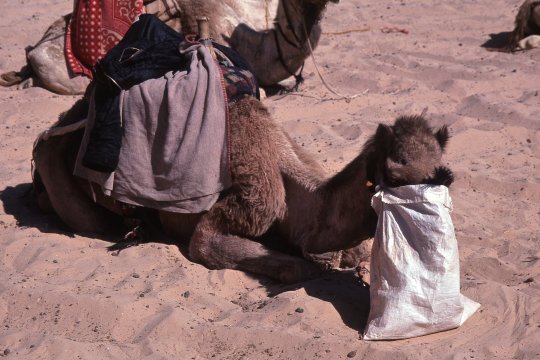 |
| .531. The camels here are used to give tourists a "taste of desert life". |
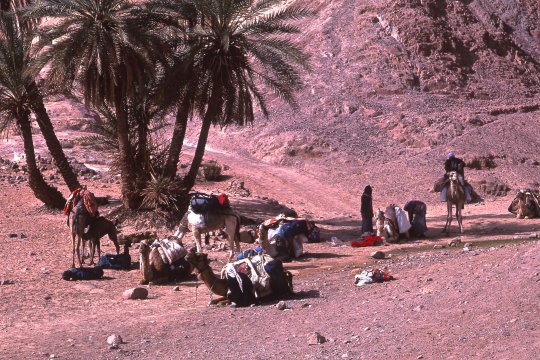 |
| .532. These were getting ready to collect the next group of visitors, from the nearest road -- to which they would be brought by bus. |
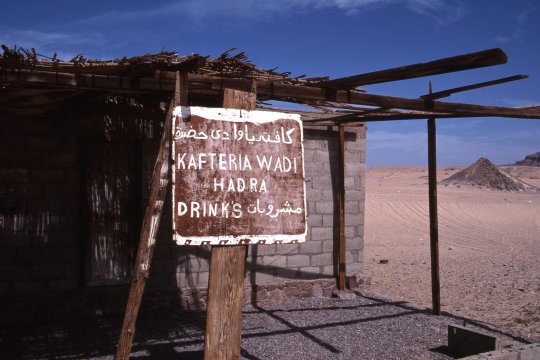 |
| .533. On their way in they are likely to stop off at the local cafeteria. It’s offerings are basic but (reasonably) cold drinks are just what a traveler needs in the desert. |
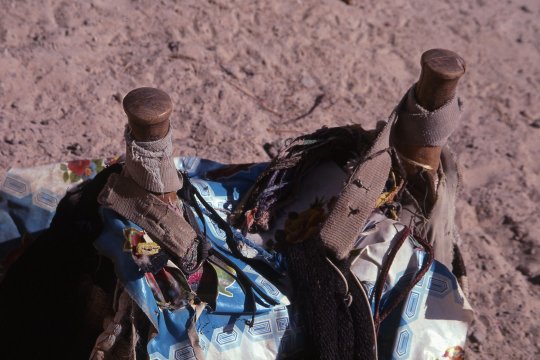 |
| .534. The saddles used were suitably padded, but some visitors preferred to travel here instead by four-wheel-drive. |
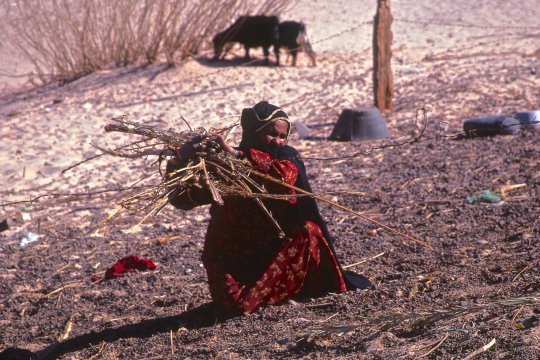 |
| .535. Before anyone arrived there was fuel to be collected. |
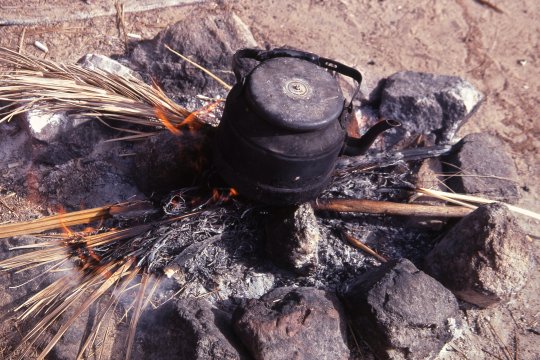 |
| .536. Some of this would be used to serve hot drinks, much as it had been for hundreds of years. |
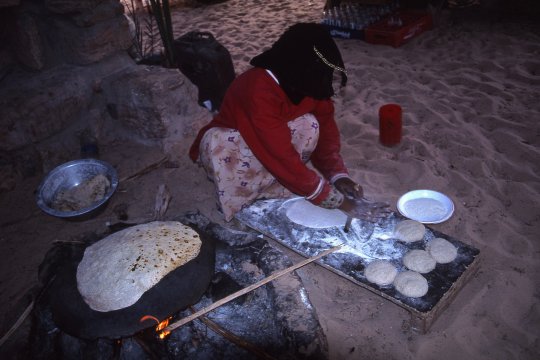 |
| .537. But the women also had to bake bread for their guests, and they did so using a curved metal plate balanced on the usual three stones. |
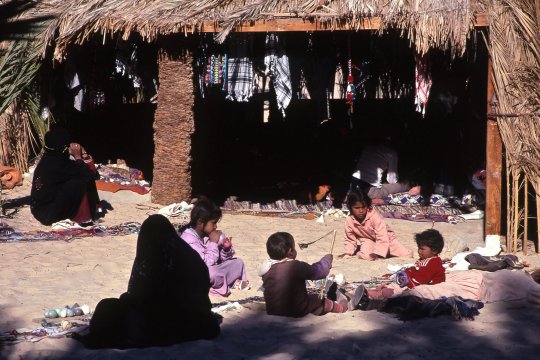 |
| .538. Visitors -- seated in the shade -- were also given an omelette, a salad, and sweet mint tea -- for which, since local resources are inadequate, the necessary supplies were shipped in by 4WD. |
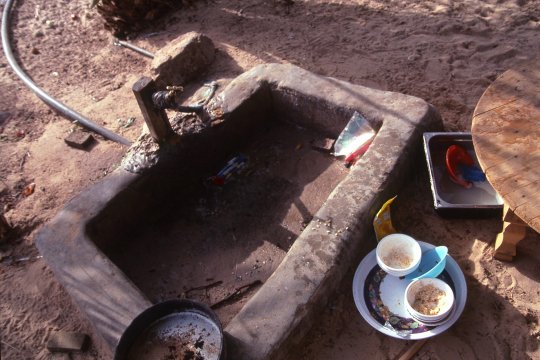 |
| .541. And the washing of dishes, which was such a chore when the family was nomadic, was made easier by water piped from the spring. |
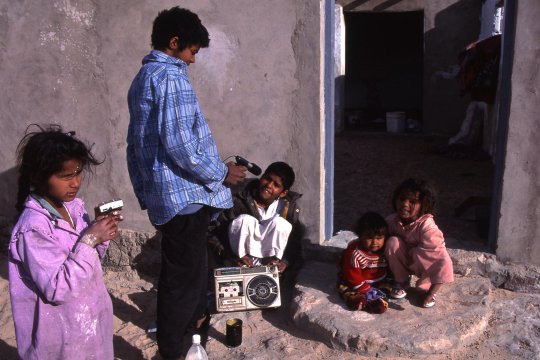 |
| .542. The income received from tourism has allowed some families to build large homes from cement as well as stone. They can also afford radios, though the microphone is again the author’s. |
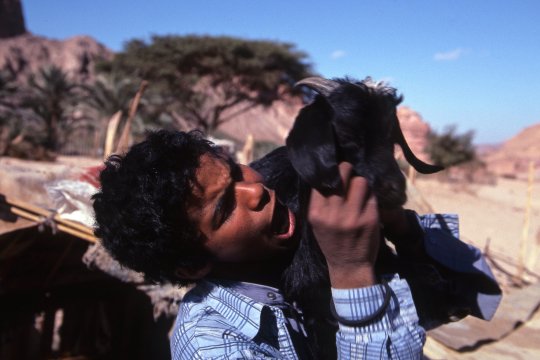 |
| .543. There is no school at Ain Khudra: it's too small. Instead the children there cared for the sheep and goats: and when these were fed and watered they found other ways to pass the time. |
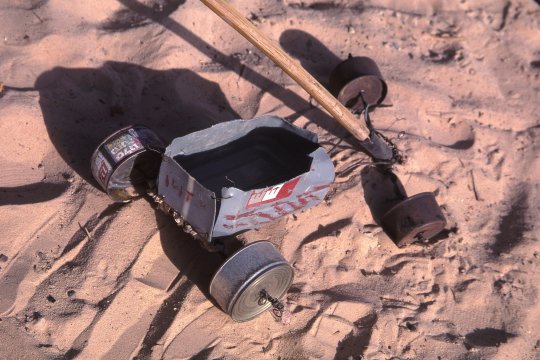 |
| .543. Their parents had no money for toys, so the kids made their own. |
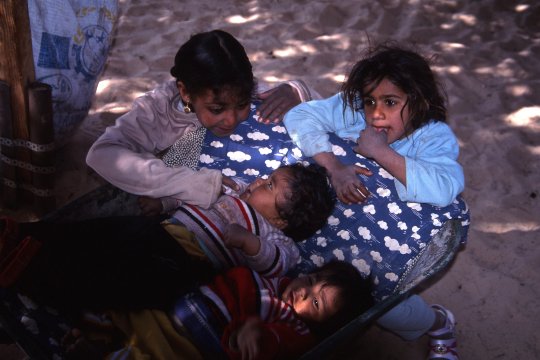 |
| .545. Their clothes were clearly not made locally, but bought in town, and most likely imported from China. |
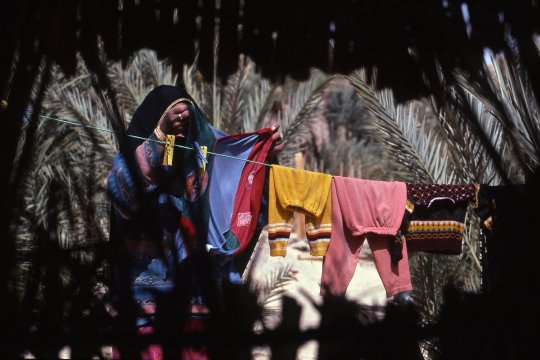 |
| .546. They would probably have been more difficult to wash and dry than their traditional garments, but caring for them was another of the things women were required to do. |

![]()
Text and photos by John Tyman
unless otherwise indicated.
Intended for Educational Use
Only.
Contact Dr. John Tyman at johntyman2@gmail.com
for more information regarding
licensing.
![]()
www.hillmanweb.com
Photo processing, Web page layout,
formatting and hosting by
William
Hillman ~ Brandon, Manitoba ~ Canada